| Chapter 3 - Results Part 1 During the three years of the study, 1996-1998, our volunteer observers exhibited a extremely high level of dedication in surveying their assigned transects (Figure 1). A total of 8,640 point count circles could been surveyed
during the three years: 8,467 were actually surveyed, or 98 percent.
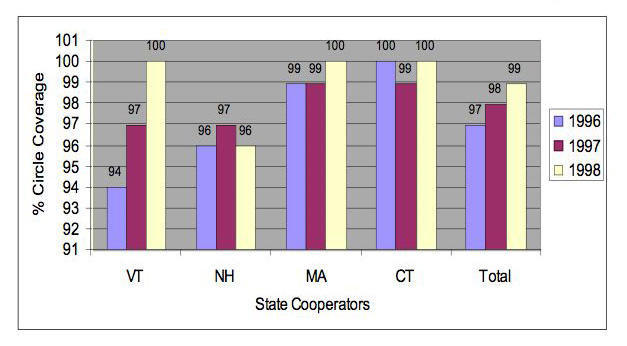
Figure 1: 1996, 1997, and 1998 Count Circle Coverage
Possible 720 circles/state
4 state total
(1996) = 2794/2880; (1997) = 2824/2880; (1998) = 2849/2880
The total of all individual birds counted (in count circles, flyovers, and outside) during the 3 years, within the four sub-watersheds, totaled 102,259. Based on the south-north patterns the count numbers demonstrate, spring migrants using the Eastern Flyway reach the mouth of the CRV in larger numbers, then disperse throughout the valley and beyond as they continue north (Figure 2).
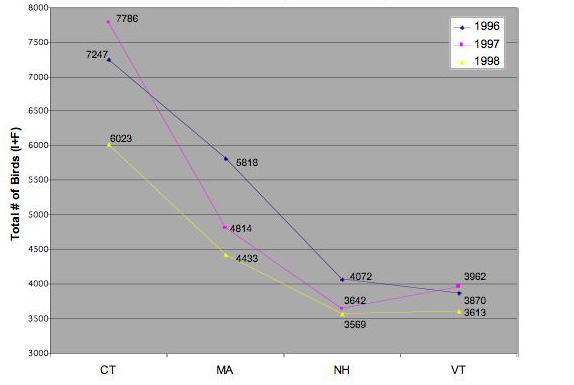
Figure 2: Individual Birds, State Totals 1996, 1997, and 1998
Total Birds (I + O + F) 1996-98 = 102,259
For the 60,000 individual birds observed within the point count circles or flyovers, a similar pattern emerged. For this group, 36 percent (21,600) were found in Connecticut’s Farmington River watershed, followed by 26 percent (15,600) in Massachusetts’ Deerfield River watershed. Moving north into New Hampshire and Vermont, 19 percent (11,400) of the birds were observed in each of these states.
A similar south-north pattern was observed in the number of bird species migrating within the Connecticut River Watershed (Figure 3).
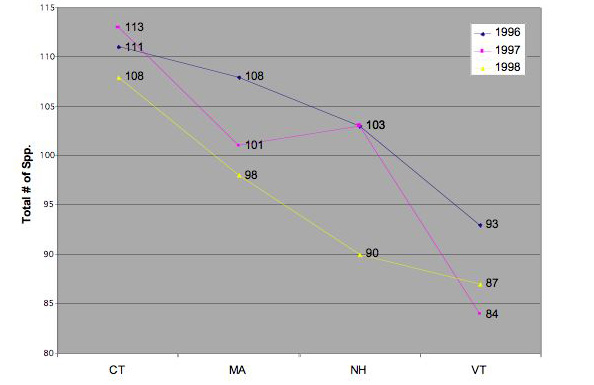
Figure 3: Total Number of Species (I + F) by State: 1996, 1997, and 1998
The number of species varied from a high of 113 (Connecticut) to a low of 84 (Vermont). The highest number of species in any given year always occurred at the southern end of the system, in Connecticut. The fewest number of species always ocured in the most northern study area, the White River watershed of Vermont. A complete 3-year species list is provided at the end of this section, as Appendix A.
Inter-year species turnover rate (modified after Diamond 1969, Diamond and May 1977) was calculated to examine the relative stability of the group of species that migrate through the Connecticut River Watershed in spring (Figures 4 and 5, for method of calculating turnover rate, see Appendix B, below).
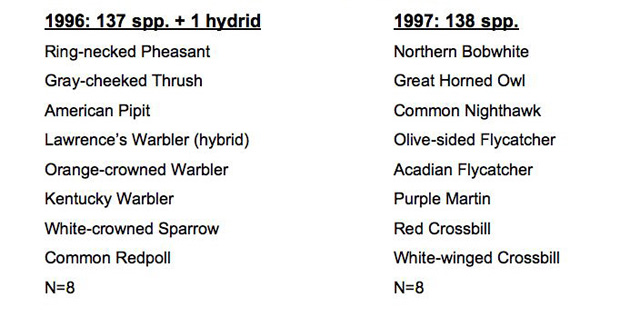
Figure 4: Species Turnover: 1996-97
Change in Number of Species: 0%
Percent Turnover: 5.8%
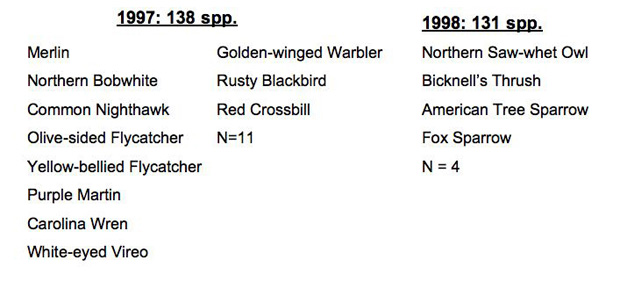
Figure 5: Species Turnover, 1997-98
Change in Number of Species: -5.07%
Percent Turnover: 5.58%
For the two turnover calculations (1996-1997 and 1997-1998) only 5.58 percent and 5.80 percent, respectively, of the species turned over. In regard to total number of species, 1996 and 1997 has the same number of species (n=138). Between 1997(n=138) and 1998 (n=131), 1998 had 7 (5 percent) fewers species. These statistic indicate a relatively stable species composition of spring migrants during this 3- year period. A number of the species that appeared in one year and disappeared in the next were typically the rarer species like Merlin, Orange-crowned Warbler, and Bicknell’s Thrush. These species are in contrast to the species that were consistently the most abundant, and present in all 3 survey years, and included the Veery, Red-eyed Vireo, Chestnut-sided Warbler, Black-throated Blue Warbler, Yellow-rumped Warbler, Black-and-white Warbler, American Redstart, and Ovenbird.
The efforts of the volunteer surveyors produced a most dramatic finding in regard to the central question of the study, "What areas of the Connecticut River watershed are migrants using during spring migration?" Of the 60,000 birds surveyed within the count circle or flying over the count circle, 47 percent used the “A” sites, or those along the main stem of the Connecticut River (Figure 6). This pattern of habitat use was seen on all sample dates. (Figure 7).
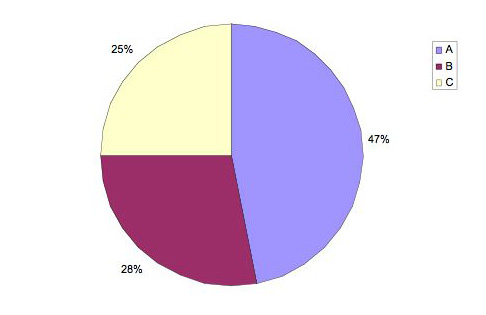
Figure 6: Habitat Use by Percent of Total Birds, 1996-98
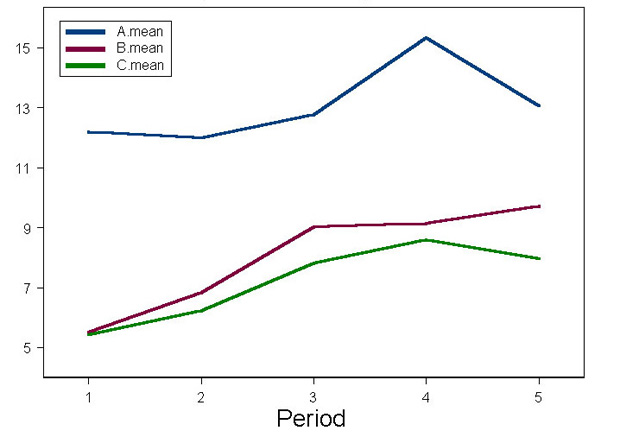
Figure 7: All Species, Mean Birds per Hectare by Habitat and Period
The south to north pattern continued in regard to stopover habitat use, where Connecticut "A" sites experienced the highest density of migrant use (Figure 8).
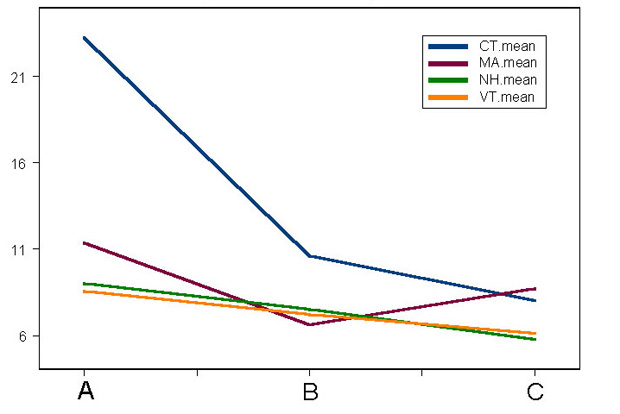
Figure 8: All Species, Mean Birds per Hectare by State and Habitat
The same north to south pattern was seen annually, in regard to "A" site use (Figures 9 and 10). The highest percentage of “A” site usage was in Connecticut (3-year average, 56%), followed by Massachusetts (42%). Migrant use of riverside “A” sites in New Hampshire and Vermont was about equal, at 38 percent and 39 percent, respectively(3-year averages). In contrast to "A" site usage, the farther north migrants traveled, the greater use they made of "B" sites (3-year average "B" site usage: Connecticut (25%), Massachusetts (26%), New Hampshire (37%), Vermont (35%). The use of upland "C" sites was also higher in the north when Connecticut (3-year average, 19%) is compared to New Hampshire (3-year average, 27%) and Vermont (3-year average, 28%). Massachusetts (3-year average, 33%) does not follow this pattern and exceeds the "C" site usage found in the other three sub-watersheds.
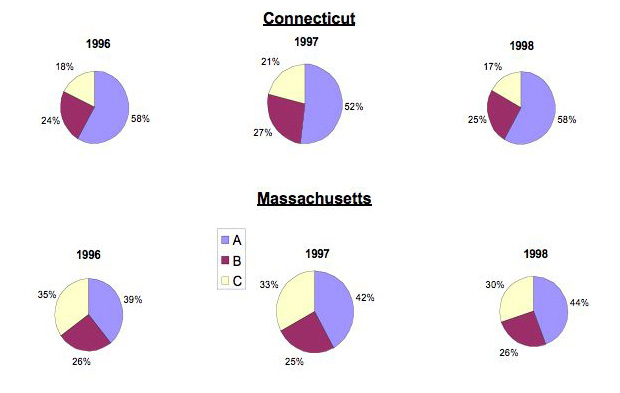
Figure 9: Habitat Use by Percent of Total Birds, 1996-98
Connecticut and Massachusetts
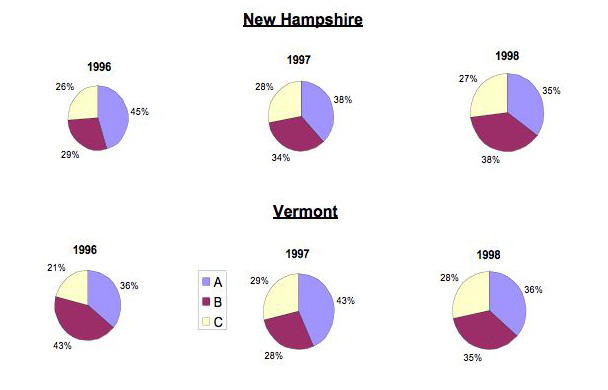
Figure 10: Habitat Use by Percent of Total Birds, 1996-98
New Hampshire and Vermont
References
Diamond, J.M. 1969. Avifaunal Equilibrium and Species Turnover Rates on the Channel Islands of California. Proceedings of the National Academy of Sciences, 64: 57-63.
Diamond, J.M. and R.M. May. 1977. Species Turnover Rates on Islands: Dependence on Cenus Interval. Science 197: 266-270.
APPENDIX A--- SPECIES LIST: ALL SPECIES, 1996-1998
ALL SPECIES IDENTIFIED ON TRANSECTS 1996-1998 [IOF] |
|
|
| COMMON NAME |
SCIENTIFIC NAME |
| Ring-necked Pheasant |
Phasianus colchicus |
| Ruffed Grouse |
Bonasa umbellus |
| Wild Turkey |
Meleagris gallopavo |
| Northern Bobwhite |
Colinus virginianus |
| Turkey Vulture |
Cathartes aura |
| Osprey |
Pandion haliaetus |
| Bald Eagle |
Haliaeetus leucocephalus |
| Northern Harrier |
Circus cyaneus |
| Sharp-shinned Hawk |
Accipiter striatus |
| Cooper's Hawk |
Accipiter cooperii |
| Northern Goshawk |
Accipiter gentilis |
| Red-shouldered Hawk |
Buteo lineatus |
| Broad-winged Hawk |
Buteo platypterus |
| Red-tailed Hawk |
Buteo jamaicensis |
| American Kestrel |
Falco sparverius |
| Merlin |
Falco columbarius |
| American Woodcock |
Scolopax minor |
| Rock Pigeon |
Columba livia |
| Mourning Dove |
Zenaida macroura |
| Black-billed Cuckoo |
Coccyzus erythropthalmus |
| Yellow-billed Cuckoo |
Coccyzus americanus |
| Great Horned Owl |
Bubo virginianus |
| Barred Owl |
Strix varia |
| Northern Saw-whet Owl |
Aegolius acadicus |
| Common Nighthawk |
Chordeiles minor |
| Chimney Swift |
Chaetura pelagica |
| Ruby-throated Hummingbird |
Archilochus colubris |
| Belted Kingfisher |
Ceryle alcyon |
| Red-bellied Woodpecker |
Melanerpes carolinus |
| Yellow-bellied Sapsucker |
Sphyrapicus varius |
| Downy Woodpecker |
Picoides pubescens |
| Hairy Woodpecker |
Picoides villosus |
| Northern Flicker |
Colaptes auratus |
| Pileated Woodpecker |
Dryocopus pileatus |
| Olive-sided Flycatcher |
Contopus borealis |
| Eastern Wood-Pewee |
Contopus virens |
| Yellow-bellied Flycatcher |
Empidonax flaviventris |
| Acadian Flycatcher |
Empidonax virescens |
| Alder Flycatcher |
Empidonax alnorum |
| Willow Flycatcher |
Empidonax traillii |
| Least Flycatcher |
Empidonax minimus |
| Eastern Phoebe |
Sayornis phoebe |
| Great Crested Flycatcher |
Myiarchus crinitus |
| Eastern Kingbird |
Tyrannus tyrannus |
| White-eyed Vireo |
Vireo griseus |
| Yellow-throated Vireo |
Vireo flavifrons |
| Blue-headed Vireo |
Vireo solitarius |
| Warbling Vireo |
Vireo gilvus |
| Philadelphia Vireo |
Vireo philadelphicus |
| Red-eyed Vireo |
Vireo olivaceus |
| Blue Jay |
Cyanocitta cristata |
| American Crow |
Corvus brachyrhynchos |
| Fish Crow |
Corvus ossifragus |
| Common Raven |
Corvus corax |
| Purple Martin |
Progne subis |
| Tree Swallow |
Tachycineta bicolor |
| Northern Rough-winged Swallow |
Stelgidopteryx serripennis |
| Bank Swallow |
Riparia riparia |
| Barn Swallow |
Hirundo rustica |
| Black-capped Chickadee |
Poecile atricapillus |
| Tufted Titmouse |
Baeolophus bicolor |
| Red-breasted Nuthatch |
Sitta canadensis |
| White-breasted Nuthatch |
Sitta carolinensis |
| Brown Creeper |
Certhia americana |
| Carolina Wren |
Thryothorus ludovicianus |
| House Wren |
Troglodytes aedon |
| Winter Wren |
Troglodytes troglodytes |
| Golden-crowned Kinglet |
Regulus satrapa |
| Ruby-crowned Kinglet |
Regulus calendula |
| Blue-gray Gnatcatcher |
Polioptila caerulea |
| Eastern Bluebird |
Sialia sialis |
| Veery |
Catharus fuscescens |
| Gray-cheeked Thrush |
Catharus minimus |
| Bicknell's Thrush |
Catharus bicknelli |
| Swainson's Thrush |
Catharus ustulatus |
| Hermit Thrush |
Catharus guttatus |
| Wood Thrush |
Hylocichla mustelina |
| American Robin |
Turdus migratorius |
| Gray Catbird |
Dumetella carolinensis |
| Northern Mockingbird |
Mimus polyglottos |
| Brown Thrasher |
Toxostoma rufum |
| European Starling |
Sturnus vulgaris |
| American Pipit |
Anthus rubescens |
| Cedar Waxwing |
Bombycilla cedrorum |
| Blue-winged Warbler |
Vermivora pinus |
| Golden-winged Warbler |
Vermivora chrysoptera |
| Tennessee Warbler |
Vermivora peregrina |
| Orange-crowned Warbler |
Vermivora celata |
| Nashville Warbler |
Vermivora ruficapilla |
| Northern Parula |
Parula americana |
| Yellow Warbler |
Dendroica petechia |
| Chestnut-sided Warbler |
Dendroica pensylvanica |
| Magnolia Warbler |
Dendroica magnolia |
| Cape May Warbler |
Dendroica tigrina |
| Black-throated Blue Warbler |
Dendroica caerulescens |
| Yellow-rumped Warbler |
Dendroica coronata |
| Black-throated Green Warbler |
Dendroica virens |
| Blackburnian Warbler |
Dendroica fusca |
| Pine Warbler |
Dendroica pinus |
| Prairie Warbler |
Dendroica discolor |
| Palm Warbler |
Dendroica palmarum |
| Bay-breasted Warbler |
Dendroica castanea |
| Blackpoll Warbler |
Dendroica striata |
| Cerulean Warbler |
Dendroica cerulea |
| Black-and-white Warbler |
Mniotilta varia |
| American Redstart |
Setophaga ruticilla |
| Worm-eating Warbler |
Helmitheros vermivorum |
| Ovenbird |
Seiurus aurocapilla |
| Northern Waterthrush |
Seiurus noveboracensis |
| Louisiana Waterthrush |
Seiurus motacilla |
| Kentucky Warbler |
Oporornis formosus |
| Mourning Warbler |
Oporornis philadelphia |
| Common Yellowthroat |
Geothlypis trichas |
| Hooded Warbler |
Wilsonia citrina |
| Wilson's Warbler |
Wilsonia pusilla |
| Canada Warbler |
Wilsonia canadensis |
| Scarlet Tanager |
Piranga olivacea |
| Eastern Towhee |
Pipilo erythrophthalmus |
| American Tree Sparrow |
Spizella arborea |
| Chipping Sparrow |
Spizella passerina |
| Field Sparrow |
Spizella pusilla |
| Savannah Sparrow |
Passerculus sandwichensis |
| Fox Sparrow |
Passerella iliaca |
| Song Sparrow |
Melospiza melodia |
| Lincoln's Sparrow |
Melospiza lincolnii |
| Swamp Sparrow |
Melospiza georgiana |
| White-throated Sparrow |
Zonotrichia albicollis |
| White-crowned Sparrow |
Zonotrichia leucophrys |
| Dark-eyed Junco |
Junco hyemalis |
| Northern Cardinal |
Cardinalis cardinalis |
| Rose-breasted Grosbeak |
Pheucticus ludovicianus |
| Indigo Bunting |
Passerina cyanea |
| Bobolink |
Dolichonyx oryzivorus |
| Red-winged Blackbird |
Agelaius phoeniceus |
| Eastern Meadowlark |
Sturnella magna |
| Rusty Blackbird |
Euphagus carolinus |
| Common Grackle |
Quiscalus quiscula |
| Brown-headed Cowbird |
Molothrus ater |
| Orchard Oriole |
Icterus spurius |
| Baltimore Oriole |
Icterus galbula |
| Purple Finch |
Carpodacus purpureus |
| House Finch |
Carpodacus mexicanus |
| Red Crossbill |
Loxia curvirostra |
| White-winged Crossbill |
Loxia leucoptera |
| Common Redpoll |
Carduelis flammea |
| Pine Siskin |
Carduelis pinus |
| American Goldfinch |
Carduelis tristis |
| Evening Grosbeak |
Coccothraustes vespertinus |
| House Sparrow |
Passer domesticus |
|
|
|
|
|
|
APPENDIX B--- TURNOVER RATE: Percent turnover rate between the the survey years, 1996-1997 and 1997-1998) was calculated with the equation: 100 (E + H)/C + D, where E is the number of species that occured in the earlier season but not the next, H is the number of new species that were not present in the earlier season but were present in the next season, C is the total number of species in the first season, and D is the number of species in the following season.
|

